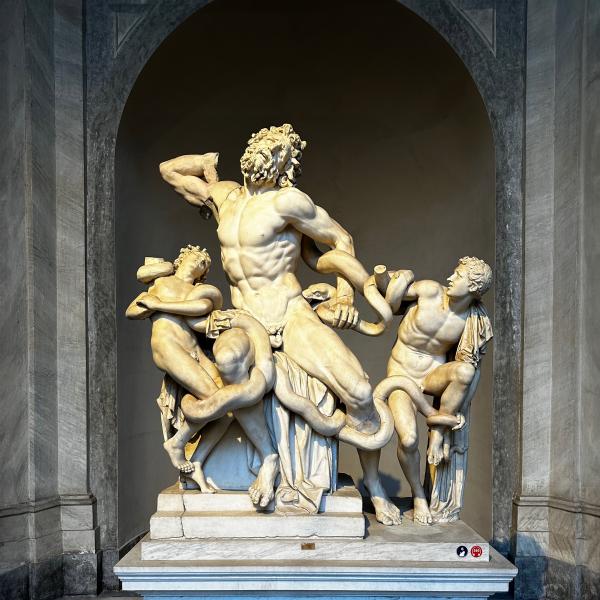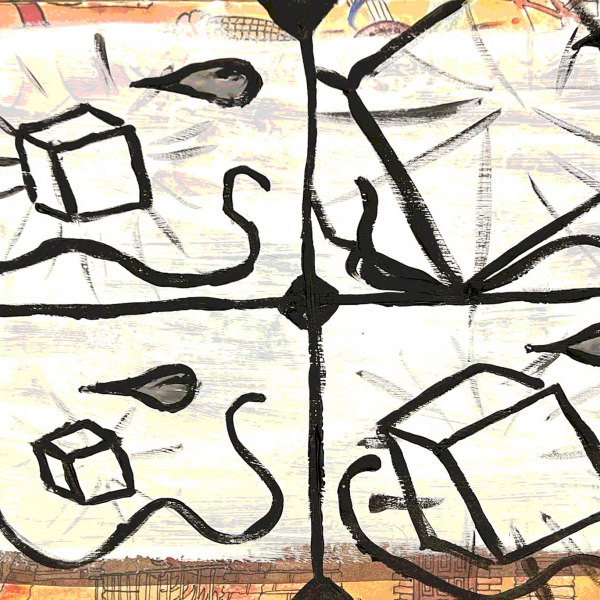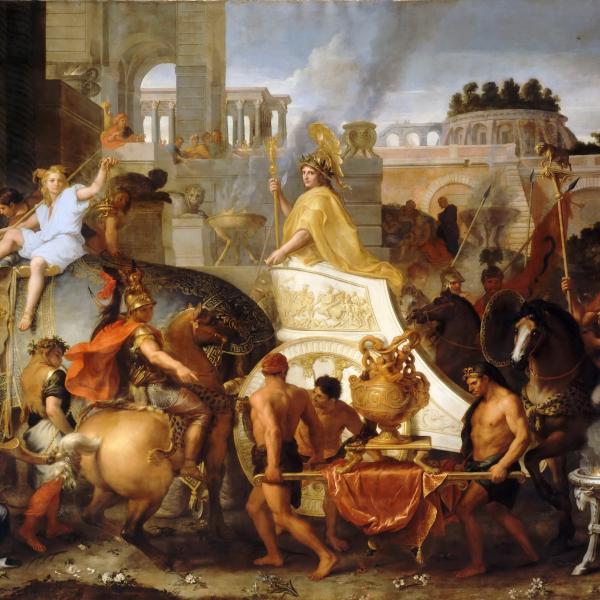By Marisa Bass
Assistant Professor, Art History & Archaeology
The great Renaissance anatomist Andreas Vesalius was born just over 500 years ago on December 31, 1514. He hailed from the city of Brussels, then part of the thriving artistic and intellectual world of the early modern Netherlands, but went on to career in Italy and as court physician to none other than the Holy Roman Emperor Charles V. In 1543, he published his seminal treatise On the Fabric of the Human Body (De humani corporis fabrica), a book that forever altered the landscape of anatomical study.
 Vesalius was proud of his achievements. In the portrait that appears among the opening pages of his Fabrica, the author confidently engages the viewer as he displays the dissected arm and hand of a cadaver. On the table before him, an inkwell and a pen remind his readers that Vesalius had the dexterous ability not only to dissect the human body but also to set his own hand to the task of writing such a monumental treatise. The portrait itself, one of over 200 illustrations to appear among the pages of Vesalius’s Fabrica, shows his investment in the power of the printed image alongside the printed word.
Vesalius was proud of his achievements. In the portrait that appears among the opening pages of his Fabrica, the author confidently engages the viewer as he displays the dissected arm and hand of a cadaver. On the table before him, an inkwell and a pen remind his readers that Vesalius had the dexterous ability not only to dissect the human body but also to set his own hand to the task of writing such a monumental treatise. The portrait itself, one of over 200 illustrations to appear among the pages of Vesalius’s Fabrica, shows his investment in the power of the printed image alongside the printed word.
Indeed, Vesalius agonized over the production of the images for his treatise. In his dedicatory preface to Charles V, he writes evocatively:
Illustrations greatly assist the understanding, for they place more clearly before the eyes what the text, no matter how explicitly, describes… Our pictures of the parts of the body will give particular pleasure to those people who do not always have the opportunity of dissecting a human body, or who, if they do have the opportunity, are by nature so squeamish (a very inappropriate quality in a physician) that … they cannot bring themselves to the point of ever actually attending a dissection.
Peering out with a discerning eye from his own portrait, Vesalius (who was hardly squeamish!) shows that it is as much through looking as through reading that a true understanding of anatomy is achieved.
To celebrate the 500th anniversary of Vesalius’ birth, scholars across the United States and Europe have organized conferences revisiting Vesalius’s landmark contributions to the study of the human body and nascent field of anatomy. One of those conferences, Vesalius and the Invention of the Modern Body, is taking place here in St. Louis at the end of this month on February 26–28, co-organized by Washington University and Saint Louis University. It brings together an interdisciplinary group of contributors to discourse not only on Vesalius’ historical contribution but also on his continued relevance today.
The conference in St. Louis uniquely germinated from the collection of rare books at the Becker Library on Washington University’s Medical Campus, which houses among many treasures two copies of Vesalius’ original Fabrica and a wealth of other early modern medical and anatomical treatises. To celebrate these local holdings, the conference includes among its many lectures two workshops with the Becker’s rare books themselves that will allow participants to see firsthand their wonderful illustrations and impressive scholarship — to engage precisely as Vesalius hoped his readers would. I will be conducting one of these workshops inspired by the material covered in my Washington University course “Renaissance Bodies: Art, Magic, Science,” which culminates each semester in an exploration of Vesalius’ Fabrica and its afterlife into the 17th century.

The other workshop will be led by my colleague and fellow art historian Suzanne Karr Schmidt, curator at prints and drawings at the Art Institute of Chicago. Schmidt is a specialist in a particularly exceptional genre of Renaissance image known as “flap prints,” so named because they were works designed to be cut out and then pasted back together as tactile three-dimensional objects, with flaps and apparatuses manipulated at the hands of their owners in order to create sundials, mnemonic devices and guides to the inner workings of the body itself. Vesalius was among those who realized early on the applicability of flap prints for his own knowledge production. He included them both in his Fabrica and in a complementary digest for students known as the Epitome, also published in 1543.
As Schmidt herself explains, “Vesalius was not only a brilliant anatomist, he also understood the value of printed bodies and commercial publishing.” Vesalius’ flap anatomy prints, “which could be cut out and assembled as didactic tools for students, soon became popular in less accurate and more allegorical prints as well, sometimes in garish color, in which any viewer could ‘dissect themselves’ to learn more about the mysteries of their bodies.” A video showing the restoration of one of these flap anatomy prints, for an exhibition on which Schmidt collaborated at the Harvard Art Museums in 2011, reveals just how elaborate and delicate these interactive prints could be.
Perhaps the most curious, and yet most fitting, anatomical flap print to emerge in the wake of Vesalius’ innovation is one that carries the features of the physician himself.
The nude Vesalius sits on a bench surrounded by diagrams of organs, and with a belly that opens to reveal his insides. Rather than holding a dissected hand as he does in his portrait for the Fabrica, Vesalius here holds a diagram of the eye, the instrument of vision to which his treatise so evocatively appealed. Neither perturbed by his own nakedness nor squeamish at his proximity to the body parts surrounding him, Vesalius models his legacy as a Renaissance scholar who challenges us, even today, in the quest to know ourselves.
Symposium: Vesalius and the Invention of the Modern Body
February 26-28
Campuses of Washington University and Saint Louis University




